(The links in this post are not necessarily an endorsement of the positions or opinions held by their authors.)
The denunciation of conspiracy theorists is currently in high gear. Especially as it relates to Christians. The average Google search for “Christians & Conspiracy Theories” will yield an abundance of links:
- Christians and Conspiracy Theories: A Call to Repentance
- Evangelicals Are Attracted to Conspiracy Theories—Why?
- Christians Are Not Immune to Conspiracy Theories
- Jesus Cares About Your Conspiracy Theory
- Why are Christians so susceptible to conspiracy?
- Too many evangelical Christians fall for conspiracy theories online, and gullibility is not a virtue
- Why Do So Many Christians Buy Into Conspiracy Theories
Christianity Today (CT) recently ran an article entitled Half of U.S. Protestant Pastors Hear Conspiracy Theories in their Churches. It’s based on a recent survey conducted by Lifeway. Like the articles above, the CT article proceeds from the assumption that
- Conspiracy theories are mostly hogwash, and
- Good Christians shouldn’t entertain them.
(I’ll be challenging both these conclusions in this article.)
Christians are now faced with a great opportunity to model a healthy, biblical approach to conspiracy theories. The prevailing approach, however, appears to be one of dismissal. But is dismissing conspiracy theories and labeling all those who believe in them (or some element of them) as gullible and delusional the right way to approach the subject?
A Show of Hands
The inferences in most of these pieces is that conspiracy theories are alarmingly pervasive among Christians. But are they?
When the Qanon conspiracy came to light, I must admit to having never heard of it. Not only that, I didn’t know a single person who claimed to believe in it! Nevertheless, the reports framed it as ubiquitous among evangelicals.
- Evangelicals need to address the QAnoners in our midst
- QAnon and evangelicals: Republicans baptized in crazy
- Is QAnon the new Christian right? With evangelicals fading, a new insanity rises
- QAnon and Evangelical Christians
- QAnon: The alternative religion that’s coming to your church
As an active participant in a 10,000+ member SoCal mega-church who’d never even heard of this ‘rampant’ conspiracy, I felt a bit lost.
And suspicious.
Is conspiracy mongering among evangelicals really as prevalent as is being charged?
In the aforementioned articles, there are few exact estimates about the actual number of evangelicals who believe in conspiracy theories. One pastor in the CT article admits that such theories are embraced “by a minority of churchgoers” and another describes it as “a fraction of their congregations.” So how many actual “believers” are we talking about here? With 90-100 million evangelicals in the U.S., this must be a sizeable amount. However, estimates are mostly anecdotal and inexact.
A recent article at RNS (Religion News Service) attempts to nail down some actual numbers. In More than a quarter of white evangelicals believe core QAnon conspiracy theory, the author, using data from The Survey Center in American Life (sponsored by American Enterprise Institute, AEI), summarizes, “27% of white evangelicals — the most of any religious group — believe the widely debunked QAnon conspiracy theory is completely or mostly accurate.” The survey question that produced that figure was this:
Donald Trump has been secretly fighting a group of child sex traffickers that includes prominent Democrats and Hollywood elites.
The theory of secret, powerful child sex rings existing in politics and Hollywood did not originate with QAnon. This particular theory coalesced around the 2016 presidential elections, claiming that Hillary Clinton and some of her associates were part of an infamous child sex ring. That theory became known as Pizzagate. Whatever individual or groups were behind Q simply aggregated those and other theories under one umbrella, valorizing Trump as “secretly fighting” these insidious forces. In the AEL survey, 27% of white evangelicals viewed the above statement as completely accurate or mostly accurate. That figure became a major talking point and was linked by groups as diverse as the Friendly Atheist, Christianity Today, and Newsweek magazine. However, upon reading these reports, I was unable to locate that exact figure. Nowhere in the survey cited was that figure — 27% of evangelicals — found.
I contacted RNS and AEI for clarity but received no response. Finally, I reached the author of the piece and, eventually, received a PDF of the source of their claim. (see below). Please note that this data was not included in the articles citing that figure.
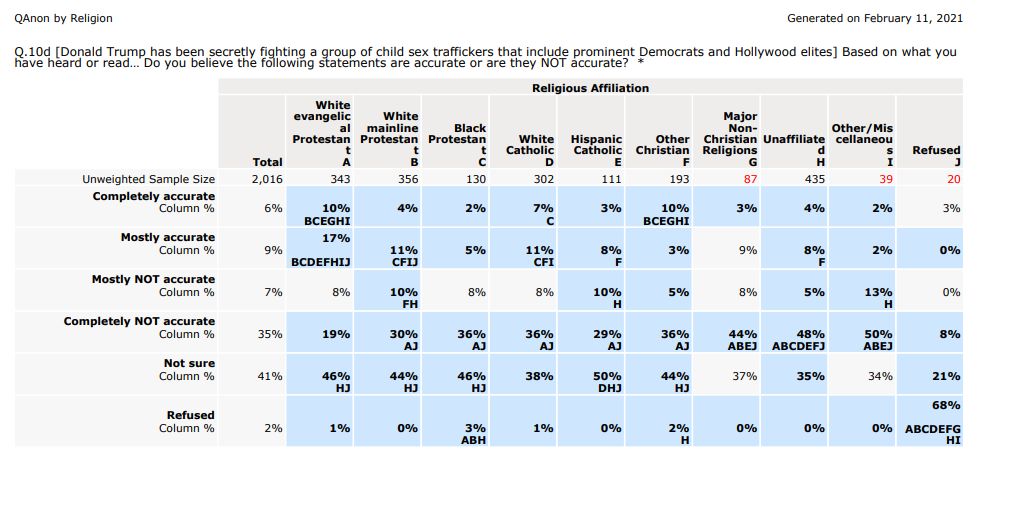
While the 27% figure is indeed accurate (per this survey), the poll results do raise questions. For example, the sample size. Out of 2,016 people surveyed, 343 identified as “white evangelical Protestant.” Out of those 343, 10% believed the statement was “completely accurate” (34 people) another 17% believed it was “mostly accurate” (58 people). So, according to this survey, 92 out of 343 white evangelicals (27%) believe in some variation of the Pizzagate / QAnon theory. But is a survey of 343 evangelicals enough to indict 27% of 100 million evangelicals with believing in Q?
This was, of course, the number that the media ran with. But is that percentage representative of 100 million evangelicals? That’s hard to say. Yet, many elaborated. Take David French who noted in his article Why is it so hard to reach the Christian Conspiracy theorist that “so many millions of Christians continue to flirt with QAnon, believe Antifa attacked the Capitol on January 6, or believe that widespread election fraud cost Trump the 2020 election.” What proof does French have of this? Well, he simply linked to the aforementioned pieces. The “millions” French cites are simply aggregates from a CT article that links to an AEI article that found that 92 out of 343 white evangelicals believed that some type of upper-level sex-trafficking ring might exist. But is this single statistic enough to formulate such a far-reaching indictment?
Especially when polls (like this one from Pew) reveal that the majority of Americans know little or anything about Q. Furthermore, in the AEI survey, even higher numbers can be found in the “Not Sure” category. In fact, of the highest number of any group, “Hispanic Catholics,” 50% claimed that they were “not sure” if Pizzagate was real. Surprisingly, this inability to categorically denounce belief in QAnon was not framed as damning of that particular demographic.
Non-Denominationals and Other Faith groups have a higher percentage of belief in QAnon than white evangelicals
There are other surveys that do not corroborate the AEI findings. For example, the survey Religion and Q which employs a different approach to data, concludes that evangelicals ARE NOT the most susceptible religious group to QAnon. Rather, their data shows that Non-Denominationals and Other Faith groups have a higher percentage of belief in QAnon than white evangelicals. Another important finding is that some evangelicals shared theories articulated by Q, without even believing in the group. The author concludes that it is “possible to be a believer [in QAnon theories] without a Q identification.”
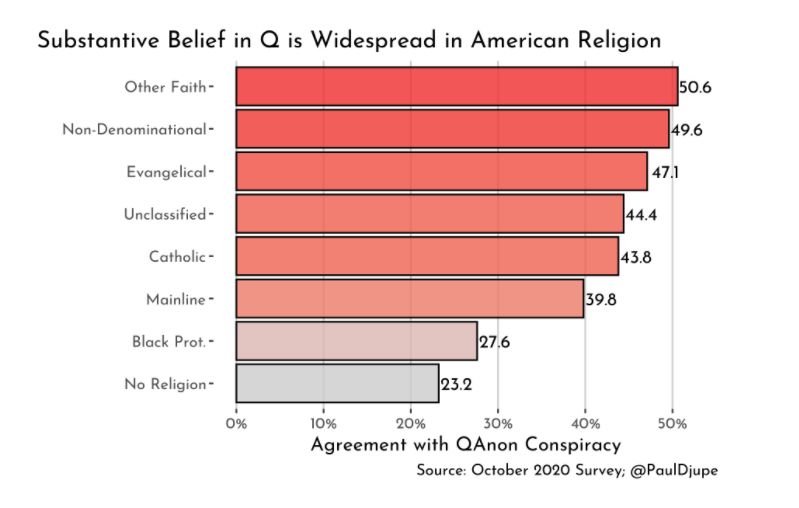
These pollsters admit that “QAnon ID and Substantive Agreement are Loosely Linked.” In other words, a sizeable portion of those who don’t identify with Q think some elements of its contents are true. The author concludes that developing a solid corollary between certain religious demographics and Q remains inexact.
Nevertheless, ascribing evangelical devotion to QAnon as being pervasive is becoming the mainstream talking point.
I’m a good example of this imprecise measure of attribution. While I don’t consider myself a QAnon believer and think some of it is pure nonsense, I definitely believe that pedophile rings exists (along with some of Q’s broader claims). We just recently had a sting operation in my hometown which nabbed over a half dozen individuals in a child porn ring. Likewise, several former child actors have admitted to being groomed by pedophiles. Like Corey Feldman, who went on record stating that “the biggest problem in Hollywood is pedophilia.” Then you’ve got Jeffrey Epstein’s Pedophile Island, the long list of politicians and celebrities who visited it, and Epstein’s extremely suspicious death. Despite this evidence, believing in secret, powerful pedophile rings indicts me as a QAnon believer. So even though I DON’T profess allegiance to QAnon, I DO partly believe that some sort of powerful pedophile ring probably exists. (Whether or not Trump was secretly battling this ring is highly questionable.) Nevertheless, the aforementioned beliefs would likely still implicate me as a QAnon nutter.
This is one of the reasons why accurately quantifying certain beliefs and how tightly or loosely they are held, is very difficult. In fact, surveys consistently reveal that 50% of Americans believe in at least one conspiracy theory. In this interesting piece at the popular Slate Star Codex, the pseudonymous blogger Scott Alexander discusses the difficulty of accurately gauging beliefs in any particular theory. Regarding conspiracy theories, this difficulty is amplified. As Alexander notes, roughly a third of people surveyed will always believe in a conspiracy theory… even if they’ve never even heard of it. (Pollsters use such prop selections as a placebo.)
Another flaw in the Evangelicals and Conspiracy Theories reportage is the disparity between specific theories and the ratio of their plausibility. Do ALL conspiracy theories suffer from the same lack of evidence? Or are some actually more possible than others? For example, is believing that COVID-19 possibly began in a lab as egregious as believing in a flat earth? Is denying the severity of climate change on the same par as believing that the Large Hadron Collider is a device for awakening an Egyptian god? And is the person who believes voter fraud likely occurred during the 2020 election just as crazy as the person who believe there’s a Nazi base on the moon? But no such clarity is offered in the aforementioned surveys. (I’ll expand on this in the next section.)
This illustrates a repeated flaw in much similar reportage — (a.) large numbers of devotees are insinuated and (b.) the degree of plausibility between various theories is not allowed for. Without a threshold for the potential plausibility of beliefs, any belief deemed “conspiratorial” indicts the interrogator as a kook. Nevertheless, the headlines tend to skim over such nuances in favor of portraying this as an epidemic within the Church.
Moving the Goal Posts
Despite the gauzy aggregation of “evidence” for white evangelical belief in conspiracy theories, the charge of “conspiracy theorism” has continued to expand, involving a growing range of events and claims. Conspiracy theories no longer just involve what were once considered fringe beliefs, things like “alien abductions” or “Holocaust denial.” Now, that list has expanded to include more immediately relevant or politically expedient issues. Now, believing that mass vaccinations pose possible risks, that a “Deep State” might exist, or that George Soros and/or a bevy of wealthy elites are orchestrating some sort of new globalism gets one lumped together with the Jonestown cult.
So who decides what’s an actual conspiracy theory and what’s not?
A popular “Conspiracy Chart” (below) embodies this new approach. The author, Abbie Richards, “a science communicator who talks about climate change, disinformation, and conspiracy theories,” created the chart (PDF here). It’s a good example of how some are re-framing our approach to conspiracy theorists. Please note what topics the author chooses to place in what category.
This chart is a good example of how the goal posts are currently being moved regarding conspiracy theories.
First, notice that the chart takes a simplistic binary approach. There are four levels one passes from being “Grounded in Reality” to “Detached from Reality.” They are:
- Speculation line
- Leaving reality
- Science denial
- The anti-Semitic point of no return
In this model, one begins “leaving reality” when they believe in cryptids like Bigfoot or the Loch Ness Monster, crop circles, or that space aliens built Stonehenge. There is no qualification for those specific beliefs’ viability, only that they are shelved as “unequivocally false.” So by the time we get to believing that COVID-19 may have been created in a lab, that “Cultural Marxism” is a threat, or that Climate Change is a hoax, the adherents are “a danger to themselves and others” and need to “get help.”
Within this paradigm, there is little wiggle room. You’re either approaching the “point of no return” or moving in the opposite direction. You’re either “leaving reality” or remaining “grounded” in it. It doesn’t matter if you believe there is compelling evidence for any given conspiracy. It doesn’t matter if scientists have been repeatedly wrong about ecological apocalypses. It doesn’t matter if recent reports indeed reveal a Shadow Campaign to swing the 2020 election. None of this matters because these beliefs have already been adjudicated by “experts,” “debunked” and deemed “dangerous.” Allegedly.
A binary approach to conspiracy theories fails to take into account both the degrees of plausibility / implausibility of individual theories and the degree to which a “believer” actually believes them.

However, this kind of binary approach fails to take into account both the degrees of plausibility / implausibility of individual theories and the degree to which a “believer” actually believes them. Let me give you an example.
I was never a “believer” in Bigfoot. No, I didn’t entirely rule it out. There’s so many miles of vast, unexplored terrain on earth, the chances of some unusual species existing has to be conceded. But I’d never personally come upon an account or purported evidence that convinced me a hairy, hominid-like cryptid actually prowled the Pacific Northwest. (Plus, so many of the “true believers” seemed… weird.) However, a recent podcast moved me from doubt / skepticism to agnosticism / uncertainty.
The Astonishing Legends podcast team conducted a six-part series dissecting the infamous Patterson-Gimlin film, which purportedly captured the iconic image (above) of a Bigfoot-like creature. I tuned in with mild curiosity, having pretty much concluded that the film was a hoax. Nevertheless, I’d never actually researched it. (I’d suggest that this tendency to doubt something without ever researching it is very common among conspiracy theory denialists.) The hosts provided a fair and critical examination of the available info, concluding that the film was not faked. What it reveals is another story. Anyway, the series caused me to readjust my thinking. No, I’m still not a “believer” in Bigfoot. However, I am now more agnostic than I was.
So where would that put me on the Conspiracy Chart?
Because conspiracy beliefs are now framed in such a black-and-white fashion, I would find myself well past the “reality” threshold and on the way to Science Denial. (In fact, simply admitting that I’m agnostic about Bigfoot and the Patterson-Gimlin film on social media prompted one person to label me as “nuts.”) There is little consideration for the fact that some conspiracy beliefs can be partly true, or that one can concede certain elements of a theory without embracing it in its entirety.
Likewise, many critiques of conspiracy theorists are just overly simplistic; they don’t take into account the differing degrees of plausibility or implausibility for various theories and the different levels of conviction in some ultimate premise, and favor a more binary approach to the subject.
Secondly, notice that the list of conspiracies is (conveniently) expanding. While Richards’ chart contains some old standbys like the JFK assassination and chemtrails, it incorporates newer theories, ones with immediate cultural and political import. For example, the belief in a Deep State is grouped with a belief in a “Mars slave colony.” And a belief that “essential oils” have healing properties is filed with believing in “Reptilian overlords.” More importantly, individuals who find themselves believing such things are labeled as “detached from reality” and needing to “get help.”
This kind of topical broad-brushing appears intentional. Not only does it effectively demonize and pigeonhole people, it frames the adherent as needing some kind of “help.” (No wonder some are actually suggesting that Trump supporters and others who subscribe to certain conspiracy theories may require some sort of re-education, deprogramming, or detoxing in order to function properly in society. One “study” even found that Over 83% of Trump Supporters are Mentally Challenged. Even Scientific American concludes these voters suffer a “shared psychosis.“)
No word on whether the people making those claims are “leaving reality” or just seriously gaslighting.
Many of Christianity’s core beliefs are now being grouped among bizarre conspiracy theories.
And if that isn’t concerning enough, many of Christianity’s core beliefs are now being grouped among bizarre conspiracy theories. For example, some are suggesting that creationism bears all the marks of a conspiracy theory. This means that Christians who believe that the earth was created in 6 literal days — a belief that was once common among Fundamentalists — are now, basically, cultists. Another author conflates a belief in demons and spiritual warfare with conspiracy theories. Finally, another alleges that those who believe in the Resurrection of Christ are “dangerous to others and themselves” and in need of psychological help. By bringing such basic Christian beliefs as a Young Earth or the Resurrection under the “conspiracy umbrella,” an immense swath of individuals can be indicted in idiocy.
Which appears intended.
This leads me to conclude that many critiques of conspiracy theorists are conveniently framed so as to indict and shame specific adherents. By labeling their opponents as nutters, critics can assume the high ground. Nowadays, one must not be permitted to believe certain things (much less support certain causes or politicians) without being branded as delusional. By collapsing all politically or socially unacceptable theories with extremely fringe beliefs, we are able to caricature “believers” as needing serious help.
So Who Decides What Conspiracy Theory is “Real”?
Notice that the above conspiracy chart assumes a shared or ‘consensus reality.’ In Richards’ diagram, she groups the various theories into five levels:
- Things that actually happened
- We have questions
- Unequivocally false but mostly harmless
- Dangerous to yourself and others
- World ruled by supreme shadow ‘elites’. Once you believe one, you usually believe most. Get help!
While such taxonomy is good for chart-making, it assumes an infallible, near-transcendent level of knowledge. But can we know with certainty that any single belief is infallibly true or “unequivocally false”? The development of quantum theory has caused some physicists to question the very nature of reality. Another theory that is gaining traction is that human consciousness creates its own reality. Are these ideas “unequivocally false”? How do you know that?
Since “reality” itself is now deemed malleable, is it possible to know with certainty that the Deep State is a hoax or that powerful, secret pedophile rings do not exist in Hollywood or politics? In the same way that self-described “fact checkers” arbitrate between what is real and what is false, this chart assumes a “consensus reality.” But where does this “consensus” come from, and can it be trusted? Who gets to decide what’s “unequivocally false” and what isn’t?
Thankfully, the government is here to help.
In a NY Times article titled How the Biden Administration Can Help Solve Our Reality Crisis, one writer claims to have spoken with several “experts” who suggested that the President appoints a “reality czar.” The role of this reality czar would be “to tackle disinformation and domestic extremism.” Apparently, this body or department would arbitrate between what is real and what is not in order to block or censure the dissemination of what it considers “disinformation.”
Of course, this begs the question of what is real and what is not. Besides, the idea of government administrators fact checking evidences of a Deep State is rather laughable. Furthermore, it assumes that both Science and Government are playing fair and being objective in their dissemination of the facts. But such an assumption is dangerous, especially when such powerful institutions have the ability to censor, de-platform, or punish those they consider purveyors of “fake news.”
Which is exactly what is happening.
Take for example the recent claims of “voter fraud” in the 2020 election. Both Big Tech, social media, and the mainstream media all joined forces to censure, block, de-monetize, and de-platform anyone who questioned the possibility of a rigged election. YouTube, Facebook, Twitter, and most cable news sources refused to platform such claims. Even Walmart and Disney joined forces to cut off money to politicians who questioned the election results. Of course, banning contrary information from the public makes it even more difficult to uncover the facts. Even my brief post on Facebook about the difficulty of finding “solid info” on voter fraud claims was flagged by FB (see below). So how in the world can someone investigate whether voter fraud really occurred when powerful mainstream sources won’t permit you to research the actual claims?
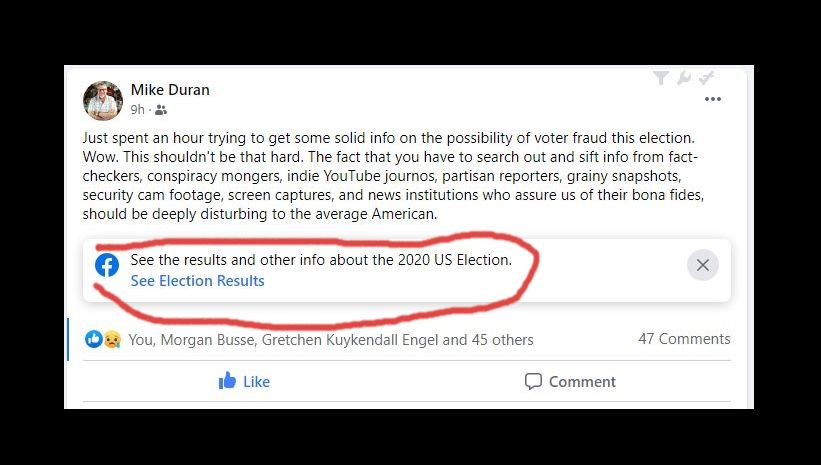
Same goes for the theory of a “Deep State.” The Conspiracy Chart lists the belief in a Deep State in the upper tier of conspiracy insanity. To believe in a “shadow government” of unelected officials pulling strings and manipulating political powers is deemed delusional, past a “point of no return.” Nevertheless, shortly after the inauguration of Joe Biden as President, Time magazine ran an article titled The Secret History of the Shadow Campaign That Saved the 2020 Election. In this article, it was revealed that an “informal alliance between left-wing activists and business titans… in which the forces of labor came together with the forces of capital” to thwart Trump’s re-election. From the article:
This is the inside story of the conspiracy to save the 2020 election, based on access to the group’s inner workings, never-before-seen documents and interviews with dozens of those involved from across the political spectrum. It is the story of an unprecedented, creative and determined campaign whose success also reveals how close the nation came to disaster. “Every attempt to interfere with the proper outcome of the election was defeated,” says Ian Bassin, co-founder of Protect Democracy, a nonpartisan rule-of-law advocacy group. “But it’s massively important for the country to understand that it didn’t happen accidentally. The system didn’t work magically. Democracy is not self-executing.”
That’s why the participants want the secret history of the 2020 election told, even though it sounds like a paranoid fever dream–a well-funded cabal of powerful people, ranging across industries and ideologies, working together behind the scenes to influence perceptions, change rules and laws, steer media coverage and control the flow of information. They were not rigging the election; they were fortifying it. And they believe the public needs to understand the system’s fragility in order to ensure that democracy in America endures. (bold mine)
Despite this brazen public admission of collusion between “a well-funded cabal of powerful people” to “influence perceptions,” “steer media coverage,” and “control the flow of information” in order to influence the outcome of the 2020 election, to believe in a a “shadow government” or “Deep State” still indicts one as a crackpot.
“…the secret history of the 2020 election [involved] a well-funded cabal of powerful people, ranging across industries and ideologies, working together behind the scenes to influence perceptions, change rules and laws, steer media coverage and control the flow of information.”
Time Magazine: The Secret History of the Shadow Campaign That Saved the 2020 Election
This blatant attempt to “influence” our very “perceptions” of reality and “control the flow of information” involves more than just presidential elections.
For example, shortly after President Biden signed an executive order allowing trans athletes to compete in school sports, the ACLU tweeted (see below) that “Trans athletes do not have an unfair advantage in sports.” This is labeled as a FACT. Most interesting is the wording here. “Trans athletes do not have an unfair advantage…” But against who? Other trans athletes? The tweet received massive pushback. The “fact” is that biological boys who’ve transitioned to girls have a profoundly unfair advantage when competing AGAINST biological girls. So the ACLU statement seems to obfuscate the real concerns. But in the case of biological boys vs. biological girls, the science is indisputable. This blatant attempt to make fiction appear as “fact” is part of a larger effort to frame “reality” in whatever way that suits the powers-that-be.
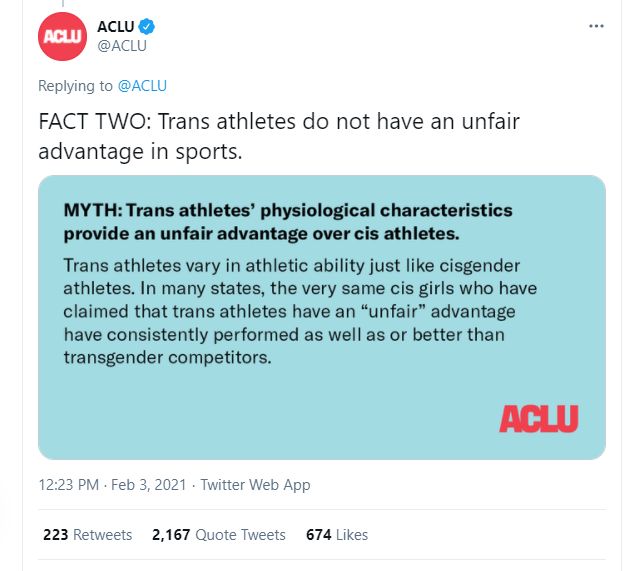
This effort to deconstruct what is true in order to reconstruct a politically correct “reality” should chill us to the bone.
Even the hard sciences are now being influenced by this trend. For example, at one time, claiming that 2+2=5 would garner a failing grade on your report card. But nowadays, it’s become a legitimate debate in academic circles. So when did two-plus-two become five? Basically, when the field of math was deconstructed via postmodern critical theory and determined to be a “hegemonic narrative” which had been “colonized” by white, European males. It’s why the Seattle school district determined that “math is oppressive.” Even Popular Mechanics attempted to defend this “new math.” It’s prompted the creation of hashtags like #WokeMath and #SocialJusticeMath which aim to incorporate diversity and decolonize the educational process. Now you can find groups like equitablemath.org, a team of educators who developed a toolkit to help dismantle racism in math classes. For example, they assert that “White supremacy shows up in math classes when… The focus is on getting the ‘right’ answer” (see below). They conclude:
“The concept of mathematics being purely objective is unequivocally false… Upholding the idea that there are always right and wrong answers perpetuate objectivity as well as fear of open conflict.” (emphasis original)
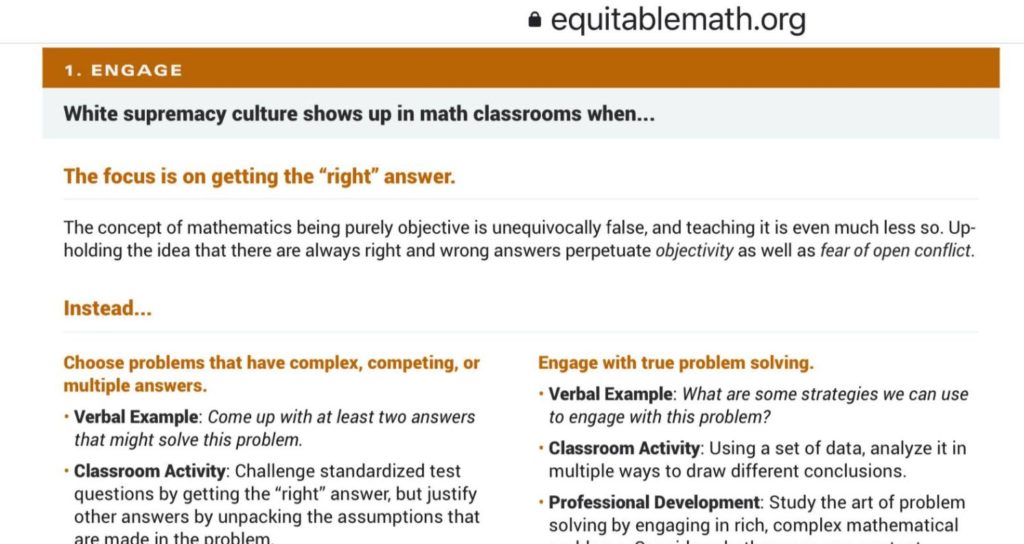
(Not coincidentally, the phrase “unequivocally false” also appears in Richards’ Conspiracy Chart.)
It’s forced some mathematicians, like James Lindsay, to state the obvious. In 2+2 Never Equals 5 Lindsay writes:
Occasionally in the course of human events it becomes necessary to have to explain something no one would ever have expected to have to defend. In the present moment, we find that circumstance to be the case and that thing to be that two and two do, in fact, make four. Further, it must be reasserted, against all reasonable expectation, that this claim about the sum of two and two being four is not merely some subjective determination or, more insidiously, an assertion of hegemonic power. So it is that such a need might arise in such a time in which irrational subjectivity becomes so desperate to defend and assert itself that no truth, no matter how simple or basic, can be considered safe from the ravages of people who have a vested ideological interest in its being wrong.
Nevertheless, “irrational subjectivity” is on the march against anything — including math or science — that gets in the way of its ideological aims. It makes one wonder whether the same illogical math standards are being used to determine statistical data regarding conspiracy theorism. For if 2+2=5 is not “unequivocally false,” how can one say with confidence that belief in Bigfoot or alien abductions is?
So with the very definitions of “reality” and “objectivity” in the crosshairs, and with “well-funded cabal[s] of powerful people” conspiring “to influence perceptions, change rules and laws, steer media coverage and control the flow of information,” who can we trust to arbitrate between what is true and what is false? Richards’ Conspiracy Chart assumes a shared or “consensus reality.” But do we even have that any longer? When the very institutions designed to uphold the pillars of society — medicine, academia, journalism, science, government — begin to modify what was classically upheld as consensus, tweaking it according to some “ideological interest,” discernment must shift from the institution to the individual.
If 2+2=5 is not “unequivocally false,” how can one say with confidence that belief in Bigfoot or alien abductions is?
In regards to conspiracy theories, how does that work? Should we trust CNN, Fox News, the New York Times, NPR, NASA, Snopes, or the World Health Organization to tell us what is “real”? Who or what is the infallible arbiter of what is fact and what is fiction? With confidence in our ruling class and its experts waning, testing claims becomes an essential, but difficult venture. Not only is the public rarely privy to all credible information regarding a claim, but the pipeline to “truth” is often compromised. Complicating this is the fact that powerful social media and government entities now assume the mantle of arbitrating what information may and may not be disseminated. Not only can no-one say with absolute certainty that Bigfoot isn’t real, that COVID-19 was not lab-created, or that the Illuminati do not exist, but information needed to confidently reach a conclusion is, in many cases, suppressed.
A good example is the issue of climate change. The mainstream narrative repeated by politicians, academics, Hollywood celebrities, public school teachers, and news anchors is that man-made global warming is a dire threat. (John Kerry, U.S. special presidential envoy for climate, recently stated that the U.S. has nine years to avoid climate catastrophe.) Those who question anthropegenic (human caused) climate change are often mocked as “climate deniers” and “anti-science.” Nevertheless, despite the proliferation of the global warming narrative, the science is NOT settled. In fact, not only is the research aggressively funded by Green Energy advocates, but reputable scientists regularly challenge the claims, and refute the data. Nevertheless, those who believe in a “Global Warming Hoax” are still viewed as “a danger to themselves and others.”
In spite of the push to #BelieveScience, more evidence continues to emerge revealing the fallibility of its men and methods. Stuart Ritchie asserts that “a deep rot is turning science into fiction” and has convincingly written about it in his book Science Fictions: How Fraud, Bias, Negligence, and Hype Undermine the Search for Truth. The Coronavirus pandemic has served as an obvious example of the potential failures of trusting science. Lockdowns, masks, transmission, death rates, and treatment have all come under scrutiny, with some even charging that the virus has created a “tyranny of experts” who’ve “turned a pandemic into a catastrophe.”
So how does the average person navigate the claim of man-made global warming (or a Deep State, hollow earth, COVID-19, Freemasons, anti-vaxxism, Reptilian Overlords, etc., etc.)? And if there is no “consensus reality” even among scientists, who and what are we to believe?
An Alternative Conspiracy Matrix
The truth is rarely as cut-and-dried as we’d like. This is especially the case for conspiracy claims. Rather than operating from a simple binary paradigm, a fair examination of many claims requires more nuance, tolerates more gray, and concedes sources that challenge one’s own biases.
Spring-boarding off Richards’ Conspiracy Chart, an alternative way to view the conspiracy matrix may be as a greyscale (below). Solid white are those things that are Absolutely True. There is enough Evidence (both Objective and Subjective) to convince us to ascribe (at least partly) to those claims. The degree (+/-) to which someone believes what is Absolutely True or Absolutely False determines their tether to Reality. (The Bible would likely describe this as the delineation between a “fool” and a “wise man.” The fool believes what is Absolutely False (-5). The wise person believes what is Absolutely True (+5) )
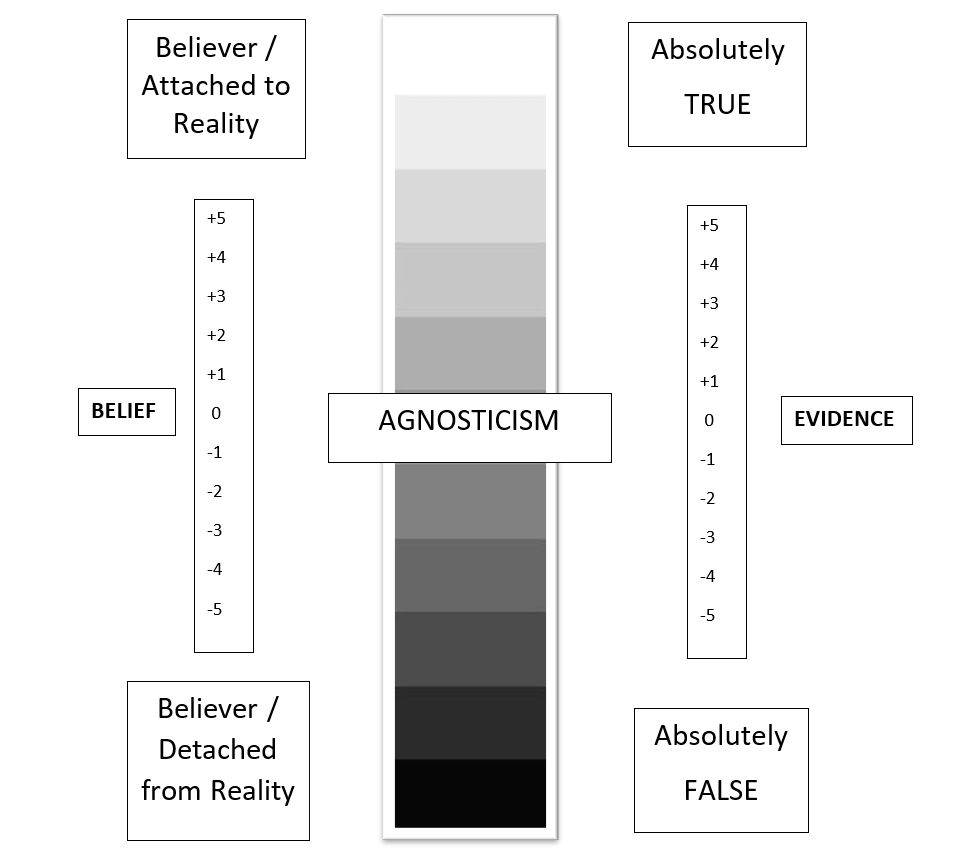
It should be noted that even things that are Absolutely True (possess lots of Evidence) still require a degree of faith. For example, what we call “conclusive evidence” is typically reached through the use of our senses — measurements, observations, calculations, etc. The true Scientist relies on her senses (which she assumes are usually trustworthy) to determine what is “fact.” The more evidence, the more a thing is factual. However, those “facts” have usually been concluded by human minds that ARE fallible. But can fallible minds reach infallible conclusions? Can fallible senses truly be trusted? Unless there’s a locus of authority outside of ourselves, something Objectively True, we can never be absolutely certain. We will always circle back to trusting our own eyes, ears, and brain. Which are not infallible. All that to say that even things we consider Absolutely True still require a degree of faith — faith in science, faith in scientists, faith in historians, faith in the media reports, faith in theologians, faith in our skills of observation, faith in medicine, faith in doctors, faith in the architects, faith in “the experts.”
Can fallible minds reach infallible conclusions?
This is why the righthand columns of the above grayscale are the most often in dispute. How much perceived Evidence is there for any claim and what degree of belief should we place in the reliability of that evidence?
Compounding this is the reality that most of us lay people must always arbitrate between second, third, and fourth-hand (or more!) accounts of any given claim. In other words, we don’t have the luxury of being eye-witnesses to all events. We must rely on others to submit Evidence. But, alas, this requires faith in their “testimony.” (Some have described this as a “Trust Index.”)
Most of us have not entered the earth’s stratosphere to personally observe the planet’s curvature. Nevertheless, there is ample Evidence to conclude that the planet is not flat. Photos, orbital mechanics, other heavenly bodies, even the Bible all bespeak to a spherical earth. Still, none of us have witnessed it first-hand. So we must exercise faith — faith that the photos have not been doctored, that scientists are not lying, that the space program is not a vast plot to deceive Americans, that a massive cover-up is not occurring, and that geography and astronomy are all coherent sciences. Neither the Flat-Earther or the Spherical Earther have entered earth’s stratosphere to confirm their beliefs. However, the Evidence for a spherical earth is clearly superior to the evidence for a flat earth. Agnosticism just doesn’t seem like a reasonable option.
But how does this work with real-time events where reportage is ongoing, eye-witness accounts are contradictory, and ideological biases may influence coverage?
The Capitol Riots may be a good example. One of the emerging talking points is that almost half of evangelicals believe that Antifa was “mostly responsible” for the Capitol Riots. It’s a claim repeated in another Christianity Today article:
There was also significant support among white evangelicals for the claim that members of antifa, or anti-fascist activists, were “mostly responsible” for the attack on the US Capitol—a discredited claim repeated by former Trump lawyer Rudy Giuliani and Franklin Graham. FBI officials have said there is “no indication” antifa played a role in the insurrection.
CT notes that the claim was “discredited” by linking to a NY Times piece. That piece reported that the FBI concluded “there is ‘no indication’ antifa played a role in the insurrection.” (That article appeared only two days after the event.)
So is that it? Is that all the Evidence we need? I was not an eyewitness to the event, and most likely, you weren’t either. So everything we know about the Capitol Riots is coming through the testimony of others and the videos being shown. But despite the “consensus reality” forming around the event, there are other elements to consider. Like the arrest of John Sullivan, a BLM supporter and activist, who breeched the Capitol building and now faces multiple federal charges. This eyewitness testimony from a senior analyst for strategy at the Center for Security Policy and an instructor/lecturer at the John F Kennedy Special Warfare Center and School at Fort Bragg alleging that he witnessed evidence of “an organized operation planned well in advance of the Jan. 6 joint session of Congress,” which included “plain-clothes militants,” “agent-provocateurs,” and “Fake Trump protesters.” Or that a ‘Boogaloo Boi’ Leader Who Aligns with Black Lives Matter Boasted About Organizing Armed Insurrection On US Capitol. The Gateway Pundit has also compiled a list of 20 individuals at the Capitol who all appear connected to Antifa or far Left groups, linking to hours of raw footage. Meanwhile, the Capitol Police recently suspended 6 officers and continues investigating dozens of officers regarding the riots (this while facing charges that “the entire executive team… knew what was coming but did not better prepare us for potential violence).
As evidence continues to unfold, what value should we place on the claim that Antifa was “mostly responsible” for the Capitol Riots? Many commentators conclude that the theory is Absolutely False, likely at a -5. But is the Evidence that convincing? Are the witnesses that trustworthy? Is that claim “unequivocally” and undeniably False? Then what about claims to the contrary? Should they all be dismissed ad hoc? And is there any possibility that partisan biases are influencing that conclusion? Also, take into account that simply aggregating data on the claims of election fraud and the Capitol Riots is increasingly difficult because much of that data is blocked, de-platformed, and inaccessible via mainstream outlets. (It’s hard to interrogate claims of “bad players” infiltrating conservative protesters when YouTube and Twitter censors the videos.)
From my own personal research I’d have to conclude that the majority players in the Capitol Riot definitely appear to be Trump supporters. However, there IS some Evidence that groups/individuals other than just Trump supporters were involved. In other words, this isn’t a binary — either/or — answer. So how would I respond to the claim that “Antifa was ‘mostly responsible’ for the Capitol Riots”? I’m skeptical. Not Agnostic, because I think there is plenty of evidence to show that the Capitol rioters were majority conservatives. However, it does appear that other actors were involved. Which would probably land me at about a -2 on the grayscale (let’s say Skeptical). With the info I’ve currently researched, I believe that Antifa was likely NOT “mostly responsible” for the Capitol riots. However, the possibility that anti-Trump forces were also involved seems likely. Again, it’s the predominant narrative spin and the suppression of contrary voices that makes confidence in any one conclusion uncertain.
Some people will still see this position as compromised. It will still indict me as a conspiracy theorist. In the binary model, it’s all or nothing. You either believe that theory is whack, or you’re a whacko. My conclusion is that many of the theories we’re currently interrogating do not lend themselves to an Absolute true/false binary. Some contain elements of the truth or some proximity to actuality. We simply don’t have enough solid info to make a confident appraisal. Furthermore, the sources of Evidence we do have for a given position are often compromised (on both sides) and must be wisely adjudicated.
In this sense, when examining conspiracy theories it’s important to differentiate between the amount and credibility of available Evidence, and what level of trust we choose to place in that Evidence. Determining “what is true” involves a combination of faith, observation, logic, honesty, etc. Our personal biases can taint our examination of alleged data. Admitting this is crucial to learning the Truth.
Unbelief or Belief can be equally healthy depending upon their proximity to the Truth.
In this framework, Agnosticism can sometimes be a safe medium. However, failing to move up or down the scale depending upon the affirmation or negation of a particular claim moves one closer to or further away from Reality. (For example, if a government whistle blower went on public record admitting that lab-created viruses were used in social engineering, we’d be forced to reconsider our disbelief in such enterprises.) Unbelief or Belief can be equally healthy depending upon their proximity to the Truth. The person who believes something is Absolutely False when it, in reality, IS, is healthy and grounded. The person who places great faith that something is Absolutely True when it, in reality, ISN’T, is in danger of being a “fool.”
Modeling Wisdom & Biblical Discernment
Regarding conspiracy claims, ignorance is not always a virtue. Especially when those claims may have a broader impact upon our lives, faith, finances, culture, family, country, or simply our perception of the world. But how does one move past “ignorance” to become informed without wasting time or getting sucked down a rabbit hole? Isn’t it just smarter to ignore conspiracy theories and those who peddle them?
Well, that depends.
One reason Christians should be interested in conspiracy theories is because our government, military, Big Pharma, banks, and cultural elites sometimes do shady things and get caught. For example, Operation Paperclip brought Nazi scientists into the U.S. after World War II to exploit their knowledge. The US Public Health Service lied about treating black men with syphilis for more than 40 years. Hollywood insiders protected Harvey Weinstein and silenced victims of sexual assault for decades. Sex trafficking and the sexual exploitation of minors really happens. The U.S. government has been researching UFOs for years. Mass public surveillance and data collection are taking place. Big Pharma and price gouging. China has hidden data and research regarding COVID-19. Etcetera, etcetera.
In fact, many things that we now know to be true were once called conspiracy theories. The claim that Jeffrey Epstein ran some sort of pedophile ring used to be considered a conspiracy. Until his death. It’s led some to admit It’s Not a Conspiracy Theory Anymore. The Bohemian Grove is real. Same goes for the recent disclosure that the Pentagon had never disbanded its once-covert research of unidentified aerial vehicles. There is even significant evidence that chemtrails are real.
In her op-ed Conspiracy theories are caused by government secrecy, Caitlyn Johnstone suggests that one reason for the exponential rise in conspiracy mongering are revelations of actual governmental cover-ups and conspiracies.
All the fixation on the way unregulated speech on the internet has contributed to the circulation of conspiracy theories conveniently ignores the real cause of those theories: government secrecy.
If the most powerful government in the world were not hiding a massive amount of its behavior behind increasingly opaque walls of secrecy, people would not need to fill in the gaps with theories about what’s happening, because there would be no gaps; they would simply see what’s happening.
Knowing these things, how should Christians approach this subject?
In an interview with NPR on conspiracy theories, Albert Mohler, president of the Southern Baptist Theological Seminary, said,
“We as human beings do not like unanswered moral questions. We want to know who did it. We want to know how it was done. We’re looking for a pattern. Our intelligence, given to us by God, is a pattern-seeking intelligence.”
The drive to know the truth, uncover mysteries and connect the dots, is a God-given faculty. It’s important that we acknowledge this. However, it’s equally important to know when this intellectual curiosity gets us into trouble.
Remember, it was the Tree of the Knowledge of Good and Evil that led to humanity’s downfall. The devil enticed the Man and Woman into sin with the promise of “secret knowledge” (Gen. 3:5). This allure for “hidden truths” and “secret wisdom” is foundational to many ancient (and contemporary) cults. Some have rightly noted that an unhealthy inducement to uncover secrets and know mysteries is a component of what draws individuals to conspiracies.
This can be especially problematic for Christians as the Bible describes many events that can be construed as conspiracies. Jesus spoke often about the “end of the age,” His glorious return to earth, and the “signs” that would accompany it. In the Olivet Discourse, Christ predicted that this final age would be preceded by
- Mass deception (Matt. 24:5)
- Global unrest (24:6-7a)
- Geological and cosmological disasters (24:7b)
- Religious persecution (24:9)
- Mass apostacy (24:10)
- False prophets who “deceive many” (24:11)
- An increase in wickedness (24:12)
One of the most important (and mysterious) figures in all of Bible prophecy has to do with the Antichrist. In Matthew 24:15, Jesus likely refers to this figure as “the abomination that causes desolation.”
“So when you see standing in the holy place ‘the abomination that causes desolation, spoken of through the prophet Daniel—let the reader understand—” (Matt. 24:15 NIV)
The phrase “abomination that causes desolation” is referenced to the prophet Daniel:
“He will confirm a covenant with many for one ‘seven.’ In the middle of the ‘seven’] he will put an end to sacrifice and offering. And at the temple he will set up an abomination that causes desolation, until the end that is decreed is poured out on him.” (Daniel 9:27 NIV).
The context of Daniel’s prophecy is concerning a vision he receives about the future of Israel, a coming Anointed One, the rebuilding of the Jewish temple, and a “ruler” who would seek to subvert God’s plans, desecrate the temple, and bring about the End. So Jesus is referring to this mysterious figure. In the New Testament, the “abomination that causes desolation” is referred to as “the beast” (Rev. 13:1, 11:7), a “man of lawlessness” or “lawless one” (II Thess. 2:3-10), whom Jesus will destroy upon His return to earth (II Thess. 2:8).
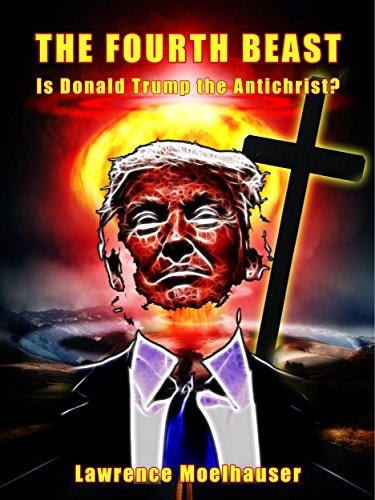
These prophecies have led Christians throughout history to anticipate the end of this age and watch for the signs of its arrival. However, the Church’s interest and expectations in Jesus’ second coming has often led to foolish speculations. The end of the world has been predicted innumerable times. Likewise, over-eager Christians have mis-labeled individuals as “the Antichrist” ad nauseum. Countless popes, presidents, politicians, and celebrities have, at some point, been labeled The Beast. For example, this author claims that Donald Trump’s “rhetoric coincides, point for point, with the prophesies regarding The Antichrist, with frightening accuracy.” Likewise, many seekers incorporate far-flung numeric schemes, prophetic calendars, tabloid-like sensationalism, and poor hermeneutics to conclude some “frightening accuracy.” Prophetic overreach is something the Christian should take great care to avoid.
This is likely why the Bible often exhorts us to be wise in our pursuit of knowledge. For instance, Jesus rebuked His listeners for knowing how to interpret the signs of weather, but not the “signs of the times.”
“You know how to interpret the appearance of the sky, but you cannot interpret the signs of the times.” (Matt. 16:3 NIV)
Please notice that Jesus says there will be “signs” of prophetic significance. In Luke 21: 25-28 and 34-36 He uses the illustration of a budding fig tree to remind His disciples to pay attention to the signs of His return. He concluded with these words:
“Be careful, or your hearts will be weighed down with carousing, drunkenness and the anxieties of life, and that day will close on you suddenly like a trap. For it will come on all those who live on the face of the whole earth. Be always on the watch, and pray that you may be able to escape all that is about to happen, and that you may be able to stand before the Son of Man.” (Lk. 21:34-36)
The theme of being “always on the watch,” awake, alert to deception is a consistent message of the Gospel and New Testament writers. For example, the Apostle Paul writes to the Thessalonians about ,
Now about the times and seasons, brothers, we do not need to write to you. For you are fully aware that the Day of the Lord will come like a thief in the night. While people are saying, ‘Peace and security,’ destruction will come upon them suddenly, like labor pains on a pregnant woman, and they will not escape.
But you, brothers, are not in the darkness so that this day should overtake you like a thief. For you are all sons of the light and sons of the day; we do not belong to the night or to the darkness. So then, let us not sleep as the others do, but let us remain awake and sober. (I Thess. 5:1-6 NIV)
Again, we are exhorted to know the “times and seasons,” and to “remain awake and sober.”
Among other things, this means being aware of conspiracy claims, crises, trends, news, global developments, political events, or societal changes that MAY have prophetic import. A recent poll from Lifeway Research revealed that the Vast Majority of Pastors See Signs of End Times in Current Events. One such belief often concerns a New World Order (NWO). Of course, conspiracy critics usually cite this as a bogus theory. (In Richards’ chart, it is in the highest tier of conspiracy lunacy.) However, the Bible does appear to indicate that global powers, political and/or religious figures, and international intrigue will play a significant role in the end times. Does this mean we should rush to conflate global events with a NWO? No. But neither should we dismiss every conspiracy claim about one as “unequivocally false.”
For example, the Great Reset has been described as evidence of the New World Order. The Great Reset was put forth by The World Economic Forum as a response to COVID-19: “There is an urgent need for global stakeholders to cooperate in simultaneously managing the direct consequences of the COVID-19 crisis. To improve the state of the world, the World Economic Forum is starting The Great Reset initiative.” Klaus Schwab, the founder and executive chairman of the World Economic Forum, wrote, “Every country, from the United States to China, must participate, and every industry, from oil and gas to tech, must be transformed. In short, we need a ‘Great Reset’ of capitalism.” This merger of high-profile business and political leaders, scientists and tech leaders, academics and social scientists is described by Time magazine as an opportunity to “reimagine capitalism,” “fix the global economy,” “implement the New Green Deal,” “manage misinformation,” “reshape the “digital” world, and implement large-scale “equity,” “social justice” and “anti-racist” policies. In fact, the Hill reported that John Kerry revealed Biden’s “devotion to radical ‘Great Reset’ movement.”
So what are Christians to think of this? Should we just move along, nothing to see here? Or is there biblical and eschatological significance in this initiative for global restructuring? Is the Great Reset possible evidence of a New World Order? Is it a “sign of the time”? Or are such questions the ramblings of a delusional believer?
Even though we are to remain vigilant and be aware of the “signs of the times,” we are also cautioned about wasting time with foolish controversies and speculation. The Apostle Paul exhorted Titus to “avoid foolish controversies” (Tit. 3: 9) and told Timothy to have nothing to do “with foolish and stupid arguments (II Tim. 2:3), “godless myths and old wives’ tales” (I Tim. 4:7). No doubt, some conspiracy theories fall into this category!
It is hubris for human beings to believe we have the right to know all things. Like it or not, some conspiracies will remain “secret” till the end of time.
Furthermore, the writers of Scripture remind us that not all knowledge is beneficial. While some knowledge puffs us up (I Cor. 8:4), making us feel superior, other knowledge is pure vanity. The writer of Ecclesiastes laments that his pursuit of knowledge was like “chasing after the wind. For with much wisdom comes much sorrow; the more knowledge, the more grief” (Ecclesiastes 1:17-18). This is probably why the Bible distinguishes between “worldly wisdom” and “godly wisdom.” “The wisdom of this world,” said Paul, “is foolishness to God” (I Cor. 3:19). He implored Timothy, “guard what has been entrusted to you, avoiding worldly and empty chatter and the opposing arguments of what is falsely called ‘knowledge'” (I Tim. 6:20-21). In fact, the Bible reveals that some things are to remain a mystery. Moses told the children of Israel, “The secret things belong to the LORD our God, but the things revealed belong to us and to our children forever, that we may follow all the words of this law” (Deut. 29:29). It is hubris for human beings to believe we have the right to know all things. Like it or not, some conspiracies will remain “secret” till the end of time. Because of this, Christians must learn to rest in the unexplained.
From this we can conclude that while some conspiracy theories MAY have biblical import and be “signs of the times,” others are little more than “foolish controversies” with no immediate impact on our lives. As much as I’m interested in Bigfoot, its existence or non-existence has little practical impact on my life and witness. For that reason, I should be wise in the amount of time I put into said research. A New World Order, however, is another story.
Part of modeling wisdom in our approach to conspiracy theories involves learning HOW to approach WHAT information.
Indeed, the Bible describes the end of the age as involving an increase in knowledge. Daniel 12:4 (KJV) specifically tells us that in “the time of the end… knowledge shall be increased.” Our age has rightly been labeled the Age of Information. We have access to more information than ever, as well as more “delivery systems” for that information. Thus, it is critical for Christians to exercise wisdom in how we navigate the glut of information at our disposal. We must each decide the threshold between research that genuinely enriches, empowers, and enlightens us, and research that is a waste of time or a spiritual drain. Is it beneficial or edifying for you to research the validity of chemtrails, 9/11 truthism, or whether celebrities actually moisturize with infant penile foreskins.
In this sense, perhaps one of the most important things for the Christian to discern regarding conspiracy theories is whether a particular theory deserves our time. Is it relevant to God’s Word? Is it important to the world I live in? Is it negatively affecting myself or loved ones in such a way that an investigation will benefit us?
Please note that wisdom does not mean believing whatever we’re told. After the Apostle Paul preached the Gospel to the Bereans, they sent him away and did their own research. For this, they are applauded:
Now the Berean Jews were of more noble character than those in Thessalonica, for they received the message with great eagerness and examined the Scriptures every day to see if what Paul said was true. (Acts 17:11)
Checking and validating sources is a “noble” thing to do. An unflinching devotion to any one source is dangerous. (In the case of the Bereans, that meant questioning an apostle of Jesus Christ!) Simply dismissing a given theory because an “expert” or a news source tells me to, is not a very biblical approach to wisdom. Nevertheless, many Christians appear to accept or discredit a conspiracy claim simply based on its source. Believing a conspiracy claim just because your pastor or Fox News affirms it is just as unwise as dismissing a conspiracy claim because the NY Times or Snopes dismisses it.
The Bible exhorts us to “Test all things; hold fast what is good” (I Thess. 5:21). Contextually, this has to do with spiritual phenomenon like a prophetic word. Yet the principle is applicable here. Why? Because some suggest that suppressing conspiracy claims is crucial to public mental health and societal peace. (Which is why many such claims are being censored and de-platformed.) In fact, the tonal address towards evangelicals and conspiracy theories is one of shame. The inference in many of the aforementioned pieces is that evangelicals are naïve, gullible, and even dangerous to themselves and others.
Discernment means giving claims a fair hearing, not muzzling them. False speech is not corrected by less speech, but more speech. Falsehoods are not overcome by censoring them, but by shining the light on them and speaking the truth.
* * *
In conclusion, some have described the Gospel as a “Divine Conspiracy” — a secret Plan to subvert the human heart and the kingdom of Man with a revolutionary, but hidden, Truth. Those of us who are part of this “conspiracy” are called to a mission of love and service. We are not “enlisted” first to arbitrate between contemporary conspiracy theories, but to be examples of “the Gospel of Kingdom.”
Being interested in conspiracy theories is not the same as believing them. It is possible to be knowledgeable of conspiracy claims, but not obsessed. Open, but not blinded by them. In many cases, the safest ground is the middle ground — Agnosticism. Knowing what is “unequivocally false” is, often, above our pay grade. Admitting that “now, we know in part” (I Cor. 13:9) can be wisdom.
As such, Christians should not be obsessed with conspiracy theories. But neither should we be disinterested or ignorant of them. Shaming those who believe certain conspiracy claims is unhelpful. “Speaking the truth in love” (Eph. 4:15) may mean correcting false claims, offering counter-evidence, or simply refraining from address for the sake of peace. There’s no pat approach. Nevertheless, we are to be aware of the “signs of the times” and expectant of the Lord’s return. We are not to be like the householder caught unawares by “the thief.” We are to be keen to many trends, possible government malfeasance, media manipulation, and charges of global conspiracy, testing claims and adjudicating truth honestly. Thus, being loving, wise, kind to outsiders, and keenly aware of the world around us is part of our heavenly call. This sometimes means being “keenly aware” of conspiracy theories… and willing to break bread with those who believe or disbelieve in them.

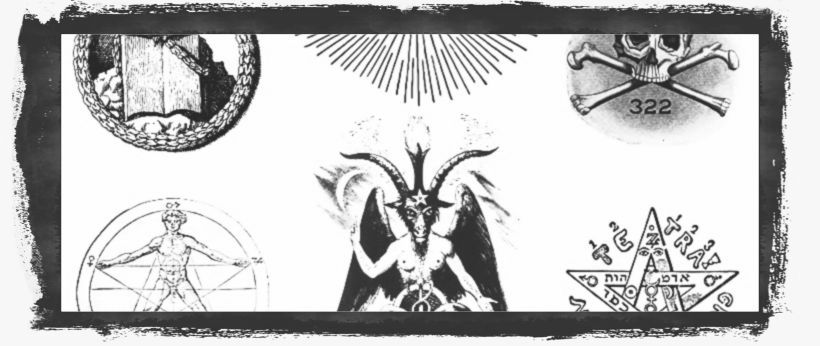
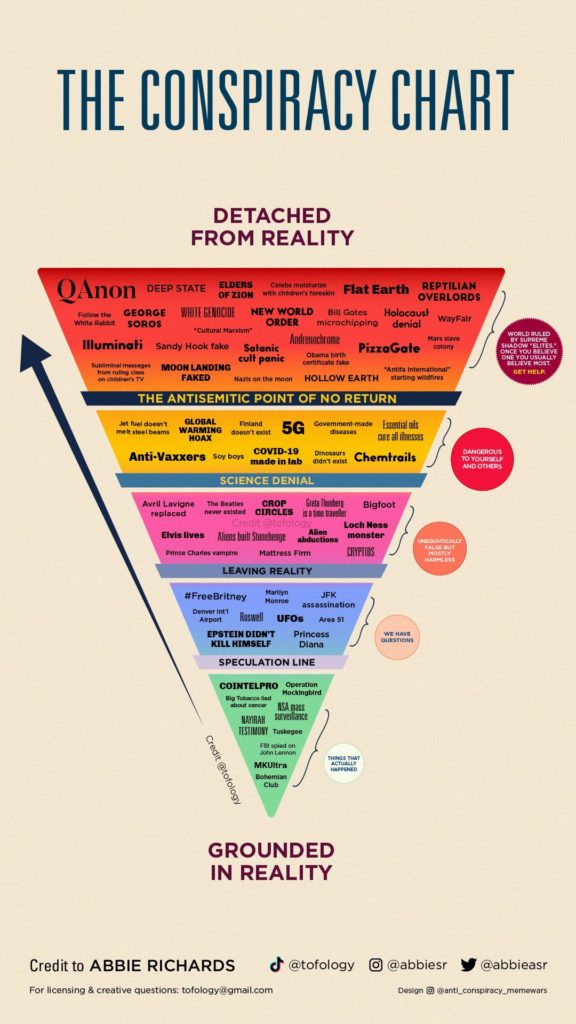
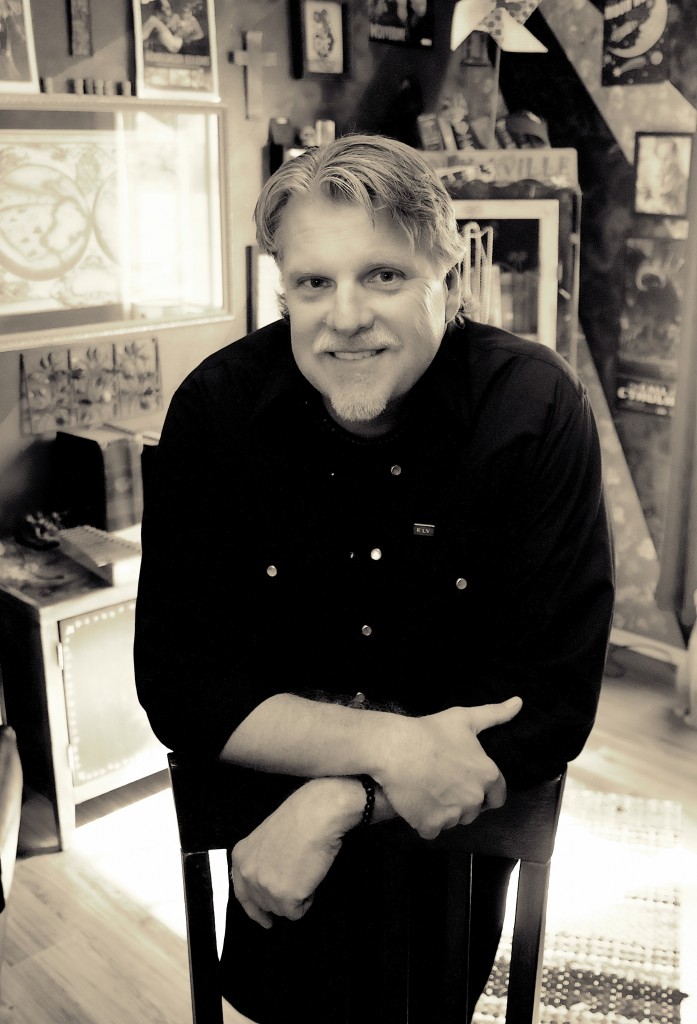
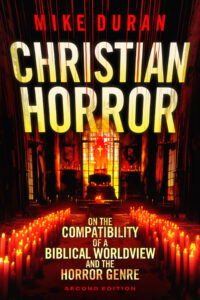
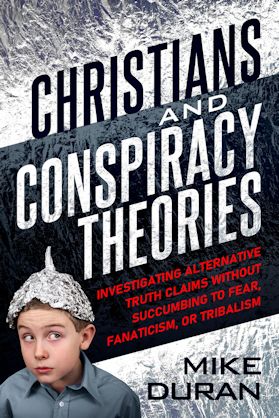
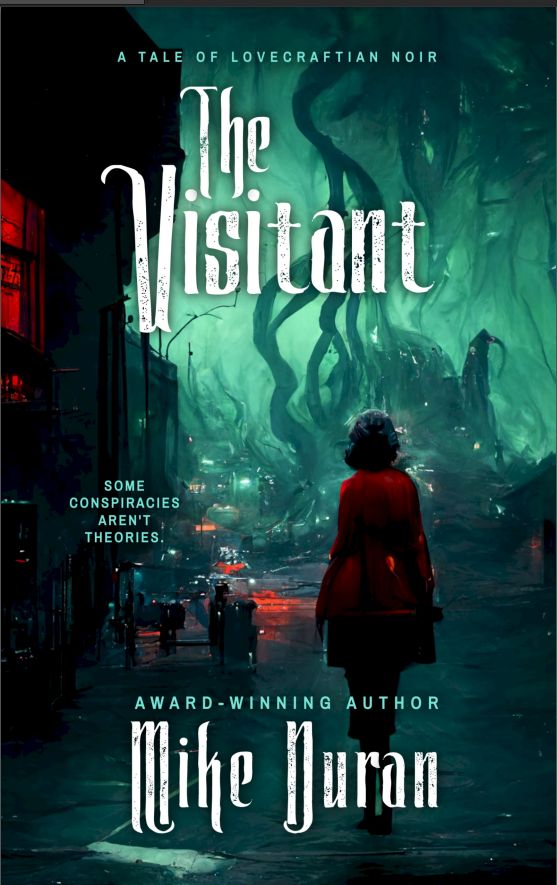

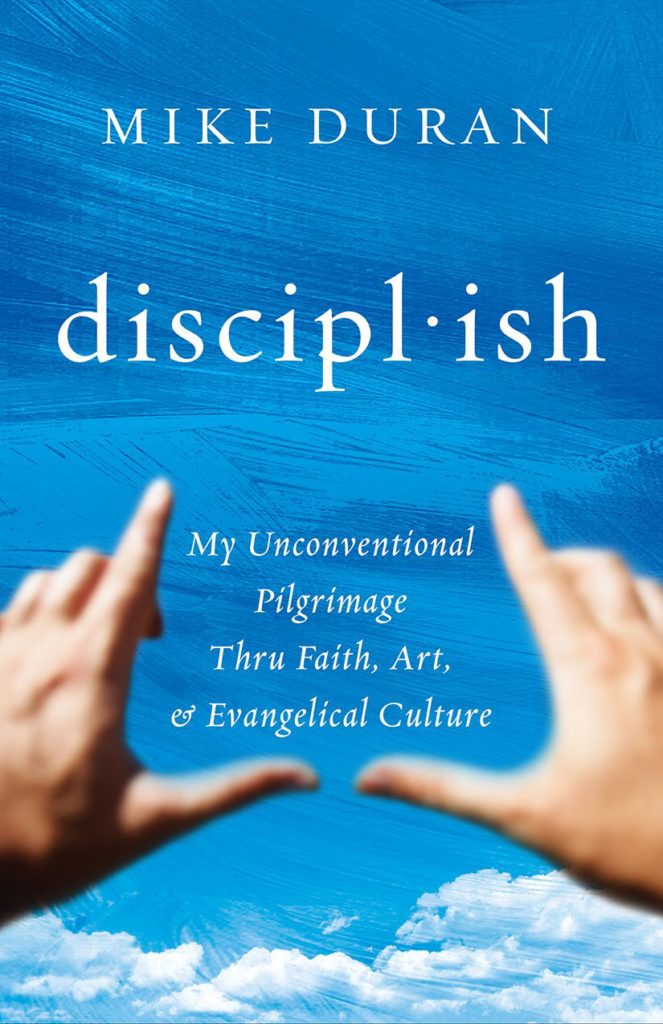
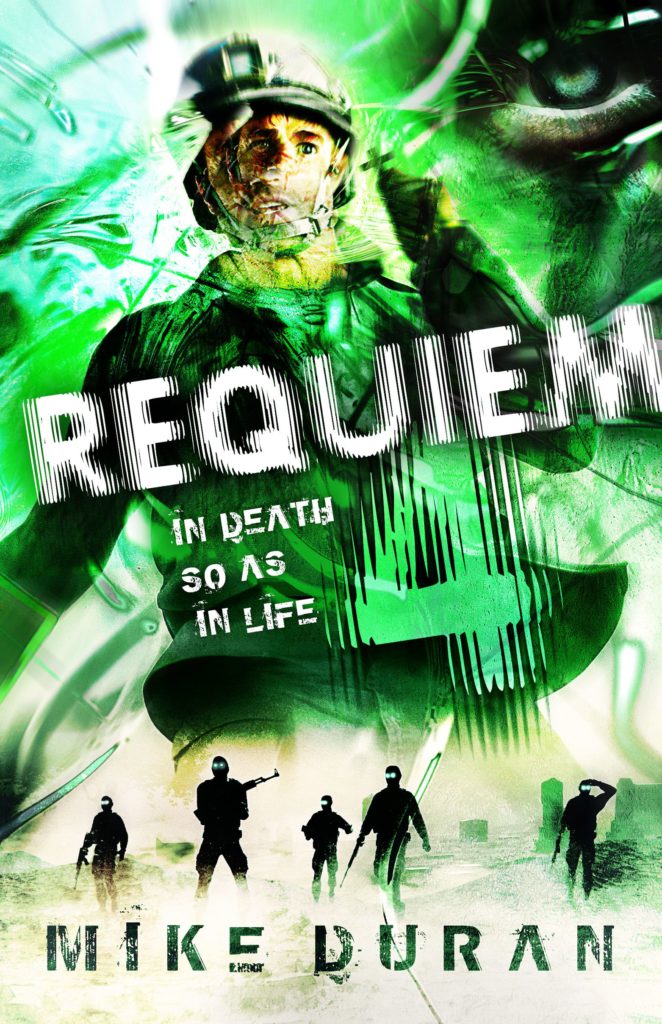

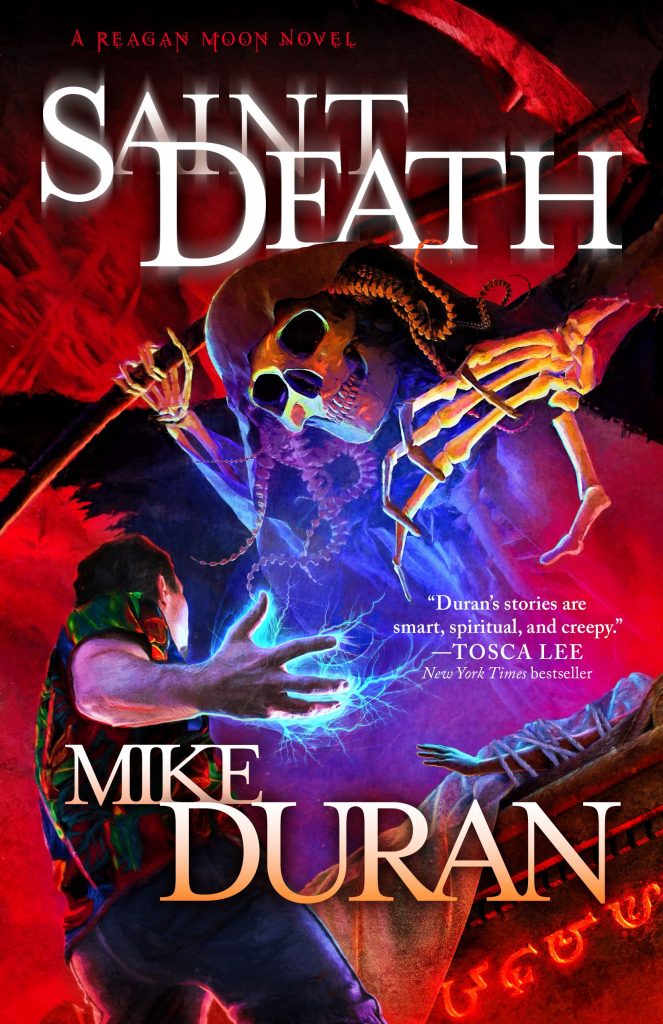
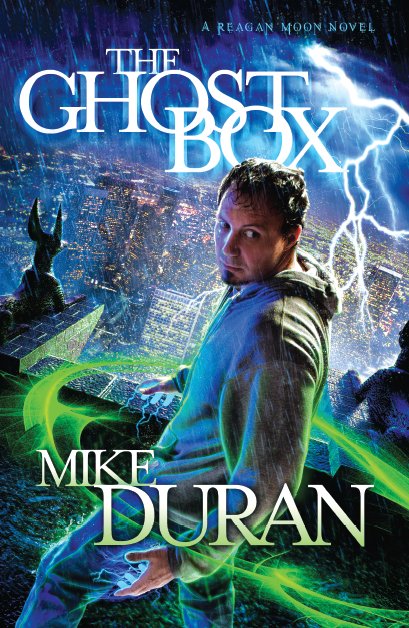
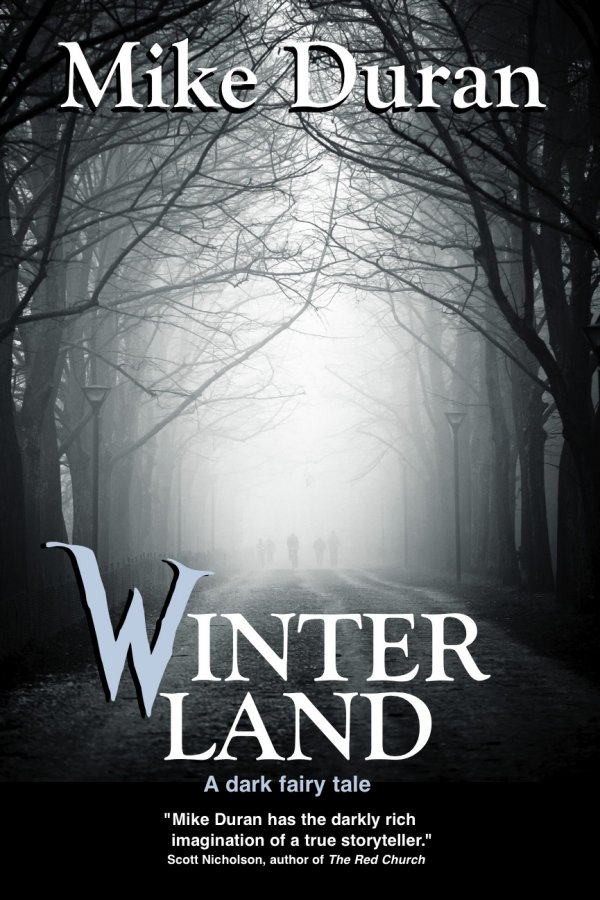
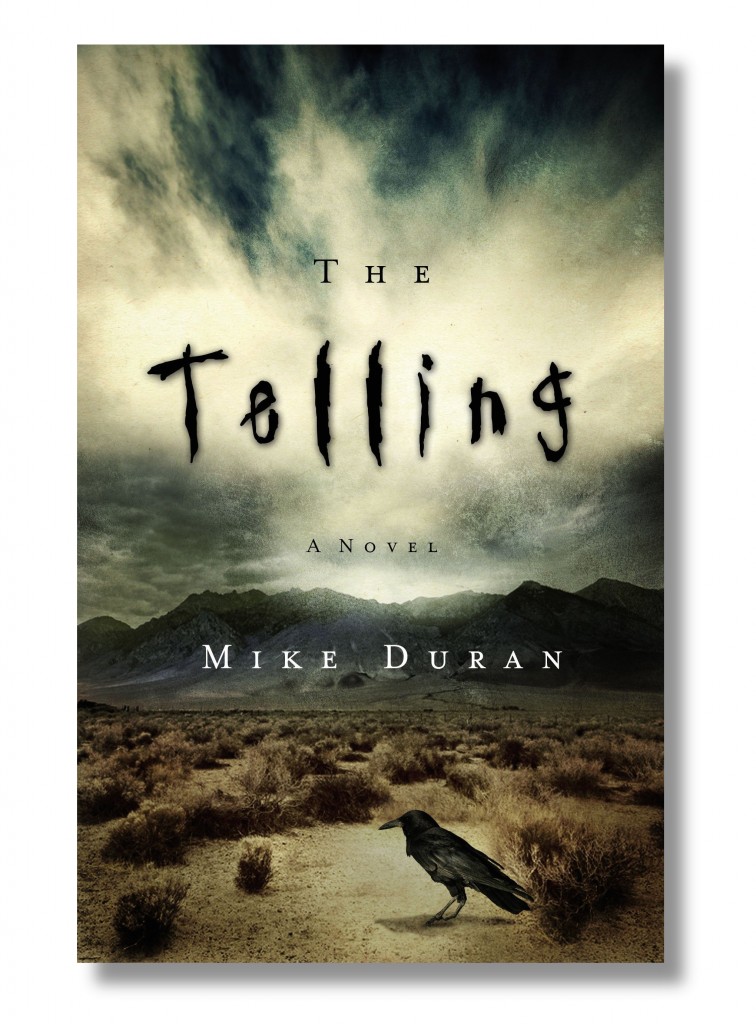
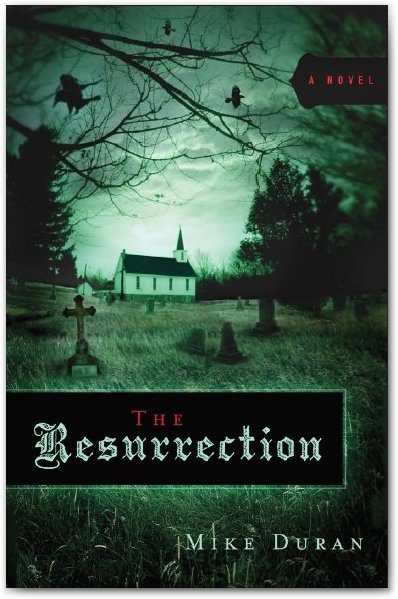
Really enjoy seeing you break all this down, Mike. Feels like it could be the kernel of a cool non-fiction book.
Funny you should say that. I actually trimmed a lot of good material from this essay in in an attempt to keep it reasonably readable. Ha! I’ve started assembling the material for a more lengthy treatment which I’ll likely publish.
Thank you. Very well thought out.
Thanks for your research and thoughts on this important topic. I wonder how many of the scientists and engineers recently responsible for landing the probe on Mars believe that 2 + 2 = 5?
This is very good and wise counsel.
In my current WIP, I include many, many conspiracy theories. This essay was incredibly timely.